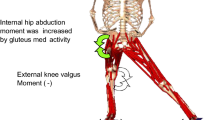Abstract
The aim of this work was to evaluate a device that allows for eccentric overload to be applied under controlled and safe conditions and it is applicable in exercises commonly used in training and rehabilitation. The machine contains a barbell, which is lowered and raised by a motor, following a predetermined velocity profile. It is capable of handling heavy loads (>500 kg) and is instrumented with a sensor to measure the velocity of the barbell and two scales to measure the vertical component of the ground reaction force. The velocity recordings of the built-in displacement sensor were found to correspond well with those obtained using a motion-capture system. Applying known weights on each scale demonstrated linearity with respect to magnitude and independence regarding location of application. The velocity of the barbell was found to be dependent on the load on the barbell and on the resisting force produced by the individual training in the machine. The combined man–machine reliability was tested using a group of habitually active males (n=13, 28–55 years) performing squats. Peak voluntary resisting force and position at peak resistance were recorded on two occasions, showing no significant differences and a coefficient of variation of 9% and 22%, respectively. Preliminary observations from training in the machine have been positive both for increasing performance in top athletes and for causing pain relief in patients with diffuse knee problems. The possibility of feedback of the force under each foot makes individual dosage of training load possible, which is valuable, e.g. in rehabilitation of a unilateral injury.








Similar content being viewed by others
References
Aagaard P, Thorstensson A (2003) Neuromuscular aspects of exercise—adaptive response evoked by strength training. In: Kjaer M, Krogsgaard M, Magnusson P, Engebretsen L, Roos H, Takala T, Woo S-Y (eds) Textbook of sports medicine. Basic science and clinical aspects of sports injury and physical activity. Blackwell, Oxford, pp 70–106
Abernethy P, Wilson G, Logan P (1995) Strength and power assessment. Issues, controversies and challenges. Sports Med 19:401–417
Alfredson H, Pietila T, Jonsson P, Lorentzon R (1998) Heavy-load eccentric calf muscle training for the treatment of chronic Achilles tendinosis. Am J Sports Med 26:360–366
Cannell LJ, Taunton JE, Clement DB, Smith C, Khan KM (2001) A randomised clinical trial of the efficacy of drop squats or leg extension/leg curl exercises to treat clinically diagnosed jumper’s knee in athletes: pilot study. Br J Sports Med 35:60–64
Cook JL, Khan KM (2001) What is the most appropriate treatment for patellar tendinopathy? Br J Sports Med 35:291–294
Hortobagyi T, Devita P, Money J, Barrier J (2001) Effects of standard and eccentric overload strength training in young women. Med Sci Sports Exerc 33:1206–1212
LaStayo PC, Woolf JM, Lewek MD, Snyder-Mackler L, Reich T, Lindstedt SL (2003) Eccentric muscle contractions: their contribution to injury, prevention, rehabilitation, and sport. J Orthop Sports Phys Ther 33:557–571
Munich H, Cipriani D, Hall C, Nelson D, Falkel J (1997) The test-retest reliability of an inclined squat strength test protocol. J Orthop Sports Phys Ther 26:209–213
Seger JY, Westing SH, Hanson M, Karlson E, Ekblom B (1988) A new dynamometer measuring concentric and eccentric muscle strength in accelerated, decelerated or isokinetic movements. Validity and reproducibility. Eur J Appl Physiol 57:526–530
Seger JY, Arvidsson B, Thorstensson A (1998) Specific effects of eccentric and concentric training on muscle strength and morphology in humans. Eur J Appl Physiol 79:49–57
Shrout PE, Fleiss JL (1979) Intraclass correlation: uses in assessing rater reliability. Psychol Bull 86:420–428
Silbernagel KG, Thomee R, Thomee P, Karlsson J (2001) Eccentric overload training for patients with chronic Achilles tendon pain—a randomised controlled study with reliability testing of the evaluation methods. Scand J Med Sci Sports 11:197–206
Stanish WD, Rubinovich RM, Curwin S (1986) Eccentric exercise in chronic tendinitis. Clin Orthop 208:65–68
Wilson GJ, Walshe AD, Fisher MR (1997) The development of an isokinetic squat device: reliability and relationship to functional performance. Eur J Appl Physiol 75:455–461
Acknowledgements
Originators of the Bromsman machine are Leif Larsson and Ulf Arnesson, who, together with Per Hågensen, have shared their knowledge on the machine’s details. The study was financially supported by the Swedish Sports Federation and the Swedish Centre of Sports Research.
Author information
Authors and Affiliations
Corresponding author
Additional information
Disclosure: The authors have no commercial or proprietary interest of this device.
Rights and permissions
About this article
Cite this article
Frohm, A., Halvorsen, K. & Thorstensson, A. A new device for controlled eccentric overloading in training and rehabilitation. Eur J Appl Physiol 94, 168–174 (2005). https://doi.org/10.1007/s00421-004-1298-8
Received:
Accepted:
Published:
Issue Date:
DOI: https://doi.org/10.1007/s00421-004-1298-8




